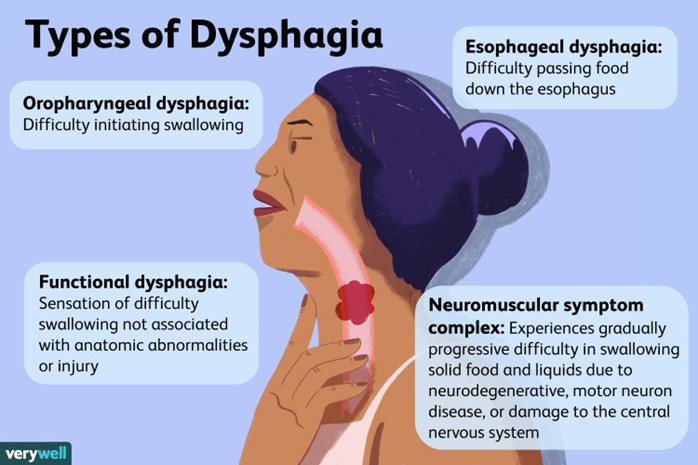A nurse is caring for a client who is at risk for aspiration pneumonia due to dysphagia. Which of the following actions should the nurse take to prevent this complication?
Tell the client to lie down after eating.
Instruct the client to tuck her chin when swallowing.
Place the client in a Fowler's position to eat.
Encourage the client to drink water before each meal.
The Correct Answer is B
Choice A reason: Telling the client to lie down after eating can increase the risk of aspiration pneumonia, as food or liquids can enter the lungs more easily when lying down.
Choice B reason: Instructing the client to tuck her chin when swallowing can help prevent aspiration pneumonia, as it closes off the airway and directs food or liquids into the esophagus.
Choice C reason: Placing the client in a Fowler's position to eat can help prevent aspiration pneumonia, as it elevates the head and chest and allows gravity to assist with swallowing.
Choice D reason: Encouraging the client to drink water before each meal can increase the risk of aspiration pneumonia, as it can thin out saliva and make it harder to control swallowing.

Nursing Test Bank
Naxlex Comprehensive Predictor Exams
Related Questions
Correct Answer is B
Explanation
Choice A reason: Recommending a total fiber intake of 12 g each day is not an appropriate action for the nurse to take because it is too low for most adults. The recommended dietary allowance (RDA. for fiber is 25 g per day for women and 38 g per day for men, which can help lower cholesterol, regulate blood sugar, and promote bowel health.
Choice B reason: Referring the client to a weight-loss support group is an appropriate action for the nurse to take because it can help the client achieve and maintain a healthy weight. A body mass index (BMI) of 28 indicates overweight, which can increase the risk of chronic diseases, such as diabetes, hypertension, and cardiovascular disease. A weight-loss support group can provide education, motivation, and accountability for the client.
Choice C reason: Advising the client to add 500 calories per day to the diet is not an appropriate action for the nurse to take because it can lead to weight gain. A client who has a BMI of 28 does not need to increase their caloric intake unless they have other medical conditions or nutritional needs that require more calories. Adding 500 calories per day to the diet can result in gaining about one pound per week, which can worsen the health outcomes of the client.
Choice D reason: Encouraging the client to continue current daily caloric intake is not an appropriate action for the nurse to take because it may prevent weight loss. A client who has a BMI of 28 needs to reduce their caloric intake by 500 to 1,000 calories per day to lose one to two pounds per week, which is considered a safe and effective rate of weight loss.
Correct Answer is ["58"]
Explanation
Step 1: Convert the weight from kilograms to pounds. 70 kg × 2.2 lbs/kg = 154 lbs Result at each step = 154 lbs
Step 2: Convert the height from meters to inches. 1.1 m × 39.37 inches/m = 43.307 inches Result at each step = 43.307 inches
Step 3: Convert the height from inches to feet. 43.307 inches ÷ 12 inches/foot = 3.609 feet Result at each step = 3.609 feet
Step 4: Calculate the BMI using the formula: BMI = weight (lbs) ÷ (height (inches))^2 × 703 BMI = 154 lbs ÷ (43.307 inches)^2 × 703 Result at each step = 154 lbs ÷ 1874.48 × 703 Result at each step = 0.0821 × 703 Result at each step = 57.7
Step 5: Round the BMI to the nearest whole number. Result at each step = 58
The client’s Body Mass Index (BMI) is 58.
Whether you are a student looking to ace your exams or a practicing nurse seeking to enhance your expertise , our nursing education contents will empower you with the confidence and competence to make a difference in the lives of patients and become a respected leader in the healthcare field.
Visit Naxlex, invest in your future and unlock endless possibilities with our unparalleled nursing education contents today
Report Wrong Answer on the Current Question
Do you disagree with the answer? If yes, what is your expected answer? Explain.
Kindly be descriptive with the issue you are facing.
